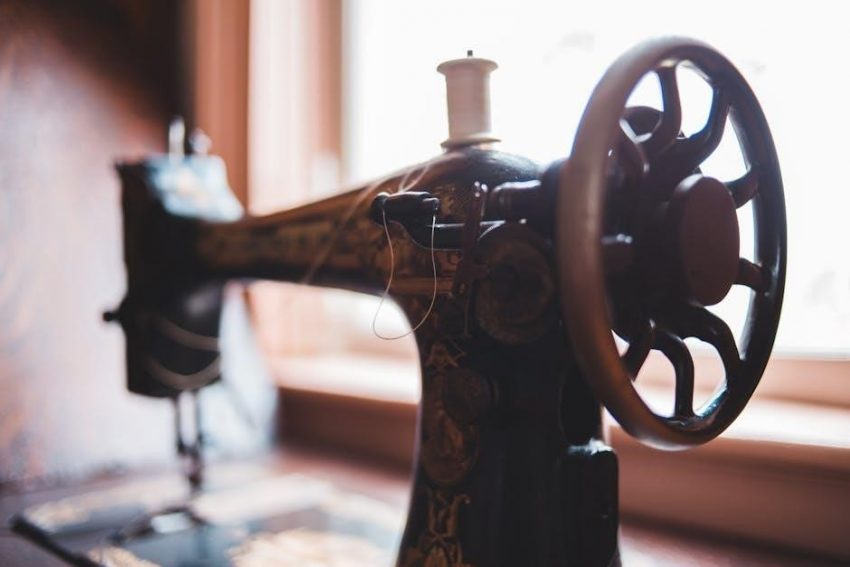The old Singer manual sewing machine represents a timeless piece of engineering, blending historical significance with practicality. Its durable design and foot treadle mechanism made sewing accessible for generations. Singer’s innovative approach revolutionized both domestic and industrial sewing, leaving a lasting cultural impact.
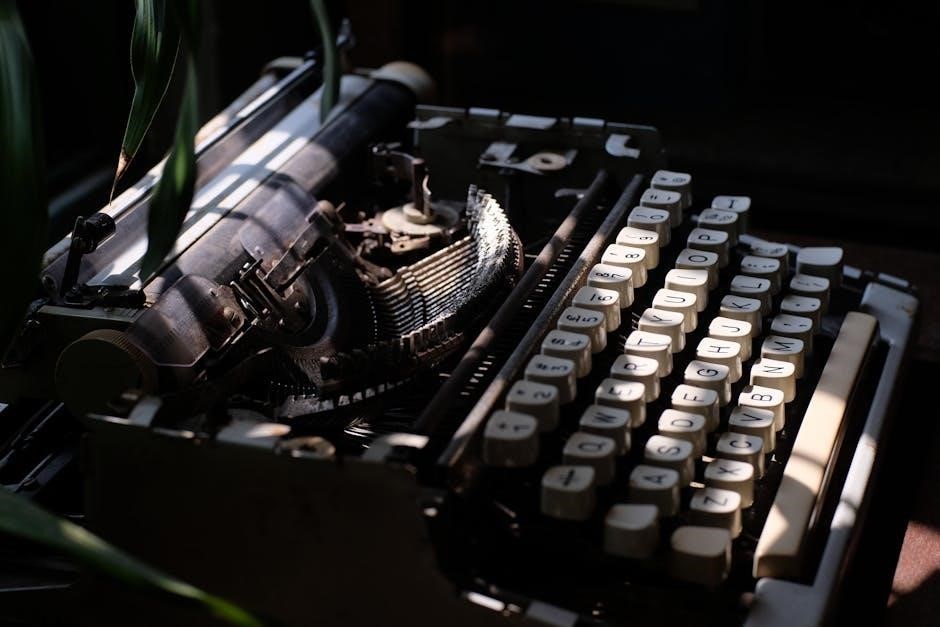
History of the Singer Sewing Machine
The Singer sewing machine traces its origins to 1851, when Isaac Singer patented his groundbreaking design, revolutionizing sewing. His innovation laid the foundation for modern sewing technology. Singer’s machines became iconic, transforming both domestic and industrial sewing practices worldwide.
Key Milestones in the Development of Singer Sewing Machines
The Singer sewing machine’s development was marked by several pivotal milestones. In 1851, Isaac Singer patented his revolutionary machine, featuring a foot treadle and a vertical needle. This design became the cornerstone of Singer’s success. By 1856, Singer and his business partner, Edward Clark, established the I.M. Singer & Co., which would later grow into a global enterprise. The introduction of the Singer Model 12 in the late 1800s and the Model 66 in the early 1900s further solidified Singer’s dominance. The company’s innovation continued with the Singer 301 model in the 1950s, offering portable and versatile designs. These milestones highlight Singer’s commitment to improving sewing technology and meeting the evolving needs of users worldwide. Singer’s legacy remains a testament to its enduring impact on the industry.
The Inventors Behind the Sewing Machine
The old Singer manual sewing machine owes its existence to pioneers like Elias Howe and Isaac Singer. Elias Howe developed the lockstitch mechanism, while Isaac Singer created the first practical sewing machine with a foot treadle.
Elias Howe and His Contributions to Sewing Machine Technology
Elias Howe, born in 1819 in Spencer, Massachusetts, was a pioneering inventor whose work laid the foundation for modern sewing machines. In 1846, he patented the lockstitch sewing machine, a groundbreaking innovation that introduced the concept of a needle with an eye at the point. This design allowed for continuous stitching, revolutionizing textile production. Howe’s machine significantly reduced the time required for sewing, making it indispensable for both industrial and domestic use. Despite facing legal battles over patent infringements, Howe’s invention remained pivotal. His contributions not only advanced sewing technology but also influenced later improvements by inventors like Isaac Singer. Howe’s legacy endures as a cornerstone of sewing machine history, emphasizing his role in transforming the garment and textile industries forever. His work remains a testament to innovation and perseverance.
Isaac Singer and the First Practical Sewing Machine
Isaac Singer, an American inventor and entrepreneur, played a pivotal role in the development of the first practical sewing machine. Born in 1811, Singer’s innovation was driven by the need for a more efficient sewing solution. In 1851, he patented a sewing machine that featured a vertically oscillating needle and a foot treadle, making it the first commercially viable model. Singer’s design improved upon earlier inventions by Elias Howe, incorporating a more user-friendly and durable mechanism. His machine quickly gained popularity, both in domestic and industrial settings, due to its reliability and ease of use. Singer’s success led to the establishment of the Singer Corporation, which became a global leader in sewing machine manufacturing. His contributions not only revolutionized the garment industry but also made sewing accessible to households worldwide, leaving a lasting impact on textile production and daily life. Singer’s legacy is a testament to his innovative spirit and entrepreneurial vision.
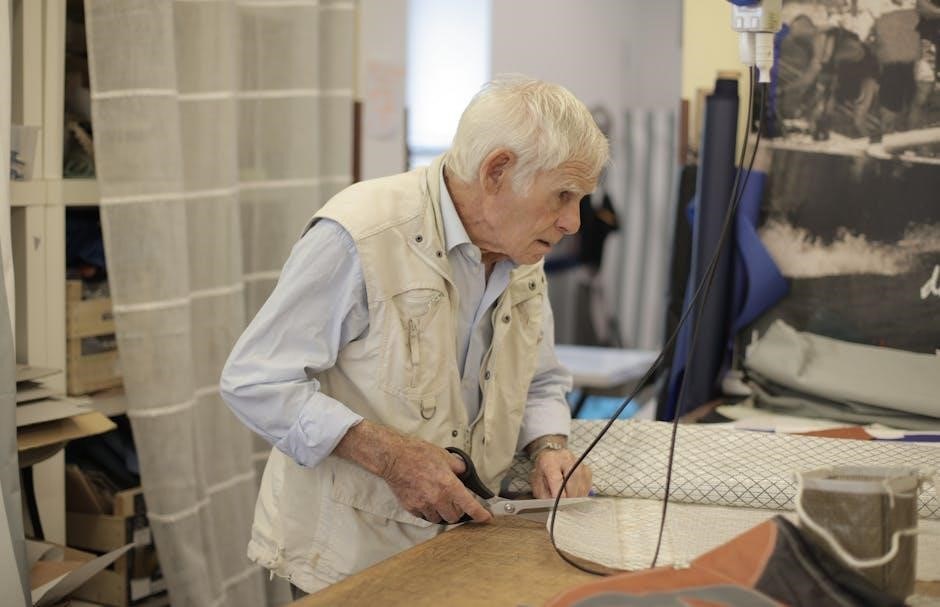
Evolution of the Singer Sewing Machine
The Singer sewing machine evolved from its 1851 patent, introducing the foot treadle mechanism. Over time, it transitioned from manual to electric models, maintaining its reputation for durability and innovative design.
From the First Patent in 1851 to Modern Designs
The Singer sewing machine’s journey began with Isaac Singer’s 1851 patent, which introduced the groundbreaking foot treadle mechanism. This innovation marked the beginning of a new era in sewing technology. By the late 1800s, Singer machines had become a staple in both domestic and industrial settings. Over the years, the design evolved, transitioning from manual to electric models, with the first electric Singer machine emerging in the early 20th century. Modern Singer sewing machines now feature advanced computerized controls, automatic threading, and various stitch options. Despite these technological advancements, the classic manual models remain cherished for their durability and nostalgic appeal. The evolution reflects Singer’s commitment to innovation while preserving the quality that made their machines iconic. Today, Singer continues to blend tradition with modernity, catering to both hobbyists and professionals worldwide.
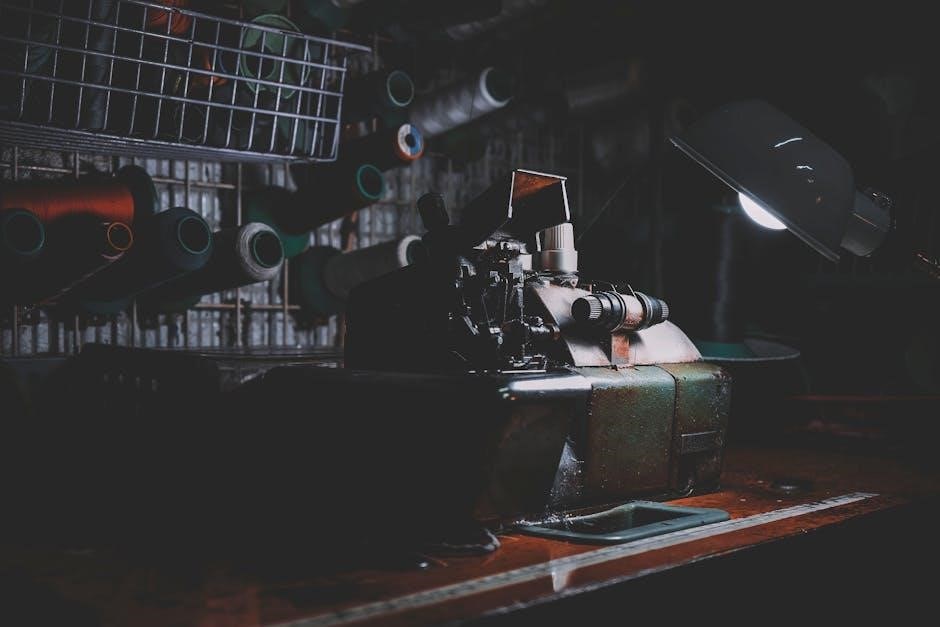
Technical Aspects of the Old Singer Manual Sewing Machine
The old Singer manual sewing machine features a foot treadle mechanism, lockstitch system, and rotating hook design. Its all-metal frame ensures durability, while tension controls provide consistent stitching quality.
The Foot Treadle Mechanism and Its Significance
The foot treadle mechanism was a groundbreaking innovation in the old Singer manual sewing machine, enabling efficient and continuous stitching. Operated by a foot pedal connected to a system of belts and pulleys, this mechanism allowed users to control the machine’s speed effortlessly. Its significance lies in its ability to free the user’s hands, making sewing faster and more precise. The treadle mechanism was particularly revolutionary for its time, as it eliminated the need for manual turning of a crank, thus reducing fatigue. This feature became a hallmark of Singer’s designs, contributing to the machine’s popularity in both domestic and industrial settings. The foot treadle’s durability and simplicity ensured its longevity, making it a cherished feature among collectors and users of vintage Singer sewing machines.
Design Features of Vintage Singer Sewing Machines
Vintage Singer sewing machines are renowned for their robust construction and elegant design, making them both functional and visually appealing. Many models feature intricate engravings and ornate detailing, showcasing exceptional craftsmanship. The machines were built with high-quality materials, such as cast iron and steel, ensuring durability and longevity. One of their standout features is the ability to perform a straight stitch, which was versatile enough for various fabrics and sewing tasks. The mechanical components, including the balance wheel and tension discs, were designed for precision and ease of use. Additionally, many vintage models came with accessories like extension tables and specialized feet, enhancing their versatility. These design elements not only made Singer machines indispensable for household and industrial use but also turned them into cherished collector’s items, admired for their blend of functionality and timeless beauty.
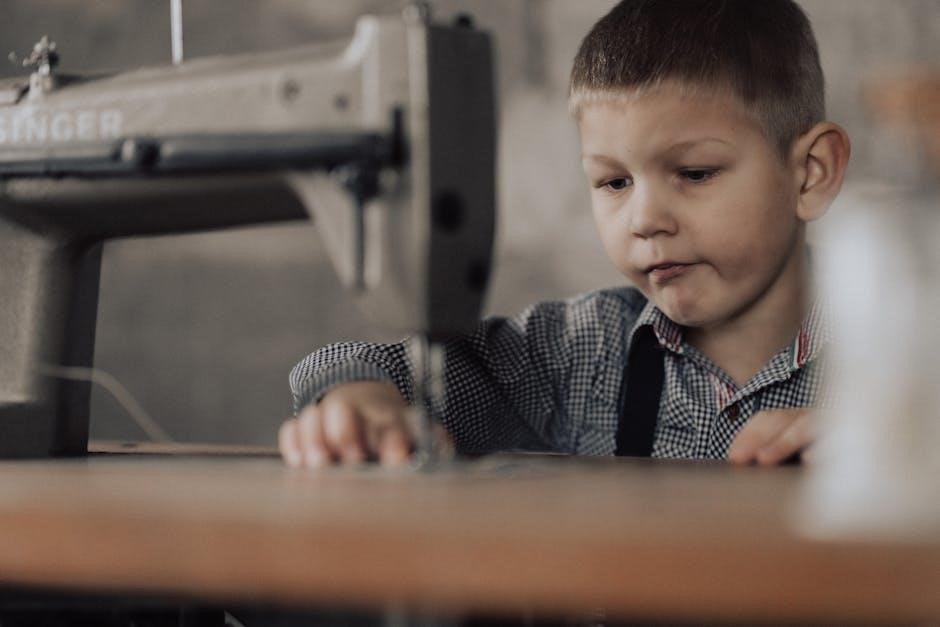
Historical Impact of the Singer Sewing Machine
The Singer sewing machine revolutionized the garment industry through mass production and transformed domestic sewing, significantly impacting global manufacturing and household economies with its innovative foot treadle design.
How the Sewing Machine Revolutionized the Garment Industry
The Singer sewing machine played a pivotal role in transforming the garment industry by enabling mass production of clothing. Prior to its invention, sewing was a labor-intensive, time-consuming process done by hand, limiting the availability and affordability of garments. Singer’s machine, patented in 1851, introduced a practical and efficient solution, allowing factories to produce clothing at an unprecedented scale. The foot treadle mechanism, which powered the machine, enabled continuous operation, significantly reducing production time and costs. This innovation led to the rise of ready-made clothing, making fashion accessible to a broader population. By streamlining manufacturing processes, the Singer sewing machine not only boosted industrial productivity but also laid the foundation for the modern garment industry, forever changing how clothes were designed, produced, and consumed globally. Its impact remains a cornerstone in the history of textile manufacturing.
The Role of Singer Sewing Machines in Domestic Sewing
Singer sewing machines revolutionized domestic sewing by making it faster, easier, and more accessible for households worldwide. Introduced in 1851, Singer’s innovative designs, such as the foot treadle mechanism, allowed individuals to sew efficiently without manual labor. This empowerment transformed home sewing, enabling families to create and repair clothing with greater ease. Singer machines became indispensable in households, particularly for women, who could now produce garments and textiles with precision and speed. Their affordability and durability made them a cornerstone of domestic life, fostering self-sufficiency and creativity. The Singer sewing machine not only simplified domestic chores but also played a significant role in shaping household economies, allowing families to save money and invest in other needs. Its impact on domestic sewing remains unparalleled, leaving a lasting legacy in homes across generations.
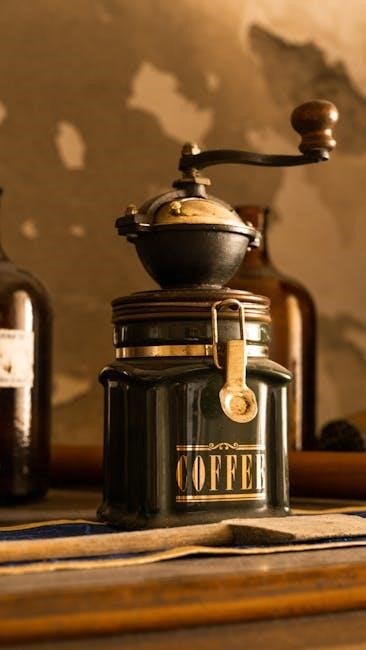
Collecting and Restoring Vintage Singer Sewing Machines
Collecting vintage Singer sewing machines has become a popular hobby, with enthusiasts seeking rare models for their historical significance and craftsmanship. Restoring these machines preserves their legacy, often requiring meticulous attention to detail and specialized knowledge. Many collectors appreciate the challenge of bringing these timeless devices back to their original functionality, while others value them as decorative pieces that connect to the past. The process of restoration not only honors the machine’s heritage but also highlights the ingenuity of early sewing technology. For many, it’s a labor of love that combines history, craftsmanship, and creativity.
Popular Models Among Collectors
The Singer 301 sewing machine is highly sought after by collectors for its portability and innovative design, featuring a potted motor that made it lightweight yet powerful. The Singer Model 66, known for its versatility and durability, is another favorite among enthusiasts, often praised for its straight-stitch capability and ornate decorations. Additionally, the Singer Model 12, an early mass-produced machine, holds historical significance and is cherished for its role in revolutionizing sewing. Collectors also appreciate models like the Singer Red Eye and the Turtle Back, which offer unique aesthetic appeal and mechanical intrigue. These vintage machines are not only functional but also serve as timeless pieces of history, attracting those who value craftsmanship and nostalgia. Their enduring popularity underscores the lasting legacy of Singer’s contributions to sewing technology.
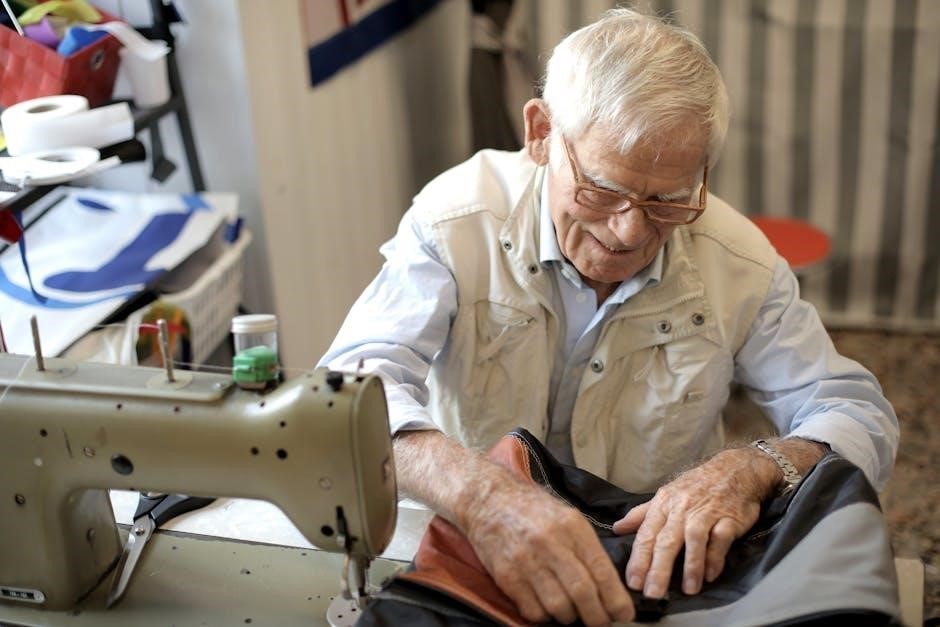
Restoration and Maintenance Tips
Restoring an old Singer manual sewing machine requires careful attention to detail and a systematic approach. Begin by thoroughly cleaning the machine, removing dirt and oil residue using gentle solvents and soft brushes. Lubricate moving parts with sewing machine oil to ensure smooth operation. Inspect the foot treadle and balance wheel, tightening any loose connections and replacing worn-out components. For rusted parts, apply rust remover and polish to restore their original finish. Replace broken or damaged belts and needles with compatible vintage or modern alternatives. Regularly oil the machine to prevent rust and maintain functionality. When polishing, use a mild metal polish to preserve the machine’s vintage appeal. Finally, test the machine by sewing a scrap fabric to ensure all mechanisms are working harmoniously. Proper maintenance ensures these timeless machines continue to function beautifully for years to come.

Cultural Significance of the Singer Sewing Machine
The Singer sewing machine holds profound cultural significance, symbolizing empowerment and creativity across generations; Its introduction revolutionized domestic life, enabling women to sew efficiently and fostering independence. The machine became a status symbol in many households, reflecting prosperity and modernity. Singer’s global reach and marketing strategies made it a household name, transcending mere utility to become a cultural icon. In literature and film, the Singer machine often appears as a nostalgic reminder of simpler times. Its presence in homes worldwide highlights its role in shaping traditions and craftsmanship. The Singer sewing machine’s enduring appeal lies in its blend of functionality and historical charm, making it a cherished artifact of industrial and domestic heritage. Its impact on societal roles and creative expression cements its place as a cornerstone of cultural history.
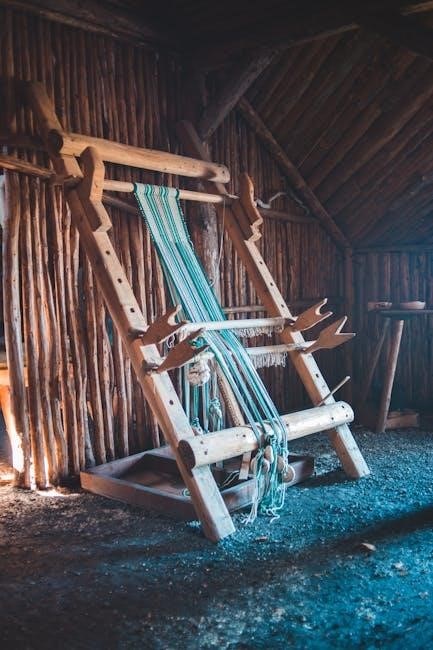
Comparison with Modern Sewing Machines
The old Singer manual sewing machine differs significantly from its modern counterparts, which often feature computerized controls and automatic functions. While vintage models rely on foot treadles and manual operation, today’s machines offer programmable stitches, touchscreens, and wireless connectivity. Modern sewing machines are lighter, faster, and more versatile, catering to a wide range of fabrics and specialized tasks. In contrast, the simplicity of old Singer machines appeals to hobbyists and collectors who value traditional craftsmanship. Despite advancements, many vintage Singer machines remain functional and sought after for their durability and nostalgic charm. The evolution from manual to automatic reflects broader technological trends, yet the timeless appeal of old Singer machines endures, bridging past and present in the world of sewing.
First, I should recall what a conclusion typically includes. It should summarize the key points, restate the importance of the topic, and possibly provide a final thought or reflection. Since the topic is about old Singer manual sewing machines, I should highlight their historical significance, their impact on both domestic and industrial sewing, and perhaps touch on why they are still relevant or cherished today.
Looking back at the information provided earlier, I see mentions of the Singer Company’s founding in 1851, the development of the foot treadle mechanism, and the durability and craftsmanship of these machines. Also, there’s a mention of collectors and enthusiasts restoring these machines, indicating a lasting appeal.
I should ensure that the conclusion ties these elements together, emphasizing the legacy of Singer sewing machines. It’s important to mention their role in revolutionizing sewing practices and their continued appreciation by collectors. Additionally, reflecting on the contrast between the old manual machines and modern automated ones could provide a nice closing thought, highlighting the timeless value of the old Singer machines.
Now, thinking about the structure: start with a strong statement about the legacy of Singer sewing machines, mention their historical impact, touch on their continued relevance, and conclude with a reflection on their enduring appeal. I need to make sure each sentence adds value and stays within the word limit.
Let me try drafting it:
“The old Singer manual sewing machine holds a cherished place in history, symbolizing innovation and durability. Its introduction revolutionized sewing practices, making it accessible for both domestic and industrial use. The foot treadle mechanism and sturdy construction ensured its reliability over decades. Even as modern sewing machines offer advanced features, the old Singer remains a favorite among collectors and enthusiasts, who appreciate its craftsmanship and historical significance. The Singer Company’s legacy endures, reminding us of the importance of quality and timeless design in an ever-evolving world.”
Now, I need to check the word count. Let me count:
The
old
Singer
manual
sewing
machine
holds
a
cherished
place
in
history,
symbolizing
innovation
and
durability.
Its
introduction
revolutionized
sewing
practices,
making
it
accessible
for
both
domestic
and
industrial
use.
The
foot
treadle
mechanism
and
sturdy
construction
ensured
its
reliability
over
decades.
Even
as
modern
sewing
machines
offer
advanced
features,
the
old
Singer
remains
a
favorite
among
collectors
and
enthusiasts,

who
appreciate
its
craftsmanship
and
historical
significance.
The
Singer
Company’s
legacy
endures,
reminding
us
of
the
importance
of
quality
and
timeless
design
in
an
ever-evolving
world.
That’s . I need to add more to reach 137. Let me expand each section a bit, perhaps adding more details about the impact on industries and personal use, the specific features that made Singer machines stand out, and maybe a sentence about their cultural significance.
Let me revise:
“The old Singer manual sewing machine holds a cherished place in history, symbolizing innovation and durability. Its introduction in the mid-19th century revolutionized sewing practices, making it accessible for both domestic and industrial use. The foot treadle mechanism, introduced by Isaac Singer, allowed for continuous stitching without the need for hand cranking, significantly increasing efficiency. The sturdy construction and straightforward design ensured its reliability over decades, becoming a staple in many households and factories. Even as modern sewing machines offer advanced features like computerized controls and automatic threading, the old Singer remains a favorite among collectors and enthusiasts, who appreciate its craftsmanship and historical significance. The Singer Company’s legacy endures, reminding us of the importance of quality and timeless design in an ever-evolving world. These machines not only transformed the garment industry but also empowered individuals, fostering creativity and self-sufficiency.”
Now, let’s count the words:
The
old
Singer
manual
sewing
machine
holds
a
cherished
place
in
history,
symbolizing
innovation
and
durability.
Its
introduction
in
the
mid-19th
century
revolutionized
sewing
practices,
making
it
accessible
for
both
domestic
and
industrial
use.
The
foot
treadle
mechanism,
introduced
by
Isaac
Singer,
allowed
for
continuous
stitching
without
the
need
for
hand
cranking,
significantly
increasing
efficiency.
The
sturdy
construction
and
straightforward
design
ensured
its
reliability
over
decades,
becoming
a
staple
in
many
households
and
factories.
Even
as
modern
sewing
machines
offer
advanced
features
like
computerized
controls
and
automatic
threading,
the
old
Singer
remains
a
favorite
among
collectors
and
enthusiasts,
who
100. appreciate
101. its
102. craftsmanship
103. and
104. historical
105. significance.
106. The
107. Singer
108. Company’s
109. legacy
110. endures,
111. reminding
112. us
113. of
114. the
115. importance
116. of
117. quality
118. and
119. timeless
120. design
121. in
122. an
123. ever-evolving
124. world.
125. These
126. machines
127. not
128. only
129. transformed
130. the
131. garment
132. industry
133. but
134. also
135. empowered
136. individuals,
137. fostering
138. creativity
139. and
140. self-sufficiency.
Oops, that’s . I need to trim it down to 137. Let’s remove some redundant phrases.
Revised version:
“The old Singer manual sewing machine holds a cherished place in history, symbolizing innovation and durability. Introduced in the mid-19th century, it revolutionized sewing practices, making it accessible for both domestic and industrial use. The foot treadle mechanism, introduced by Isaac Singer, allowed for continuous stitching without hand cranking, significantly increasing efficiency. Its sturdy construction and straightforward design ensured reliability over decades, becoming a staple in households and factories. While modern sewing machines offer advanced features like computerized controls and automatic threading, the old Singer remains a favorite among collectors and enthusiasts, appreciating its craftsmanship and historical significance. The Singer Company’s legacy endures, reminding us of the importance of quality and timeless design in an ever-evolving world. These machines transformed the garment industry and empowered individuals, fostering creativity and self-sufficiency.”
Counting again:
The
old
Singer
manual
sewing
machine
holds
a
cherished
place
in
history,
symbolizing
innovation
and
durability.
Introduced
in
the
mid-19th
century,
it
revolutionized
sewing
practices,
making
it
accessible
for
both
domestic
and
industrial
use.
The
foot
treadle
mechanism,
introduced
by
Isaac
Singer,
43

